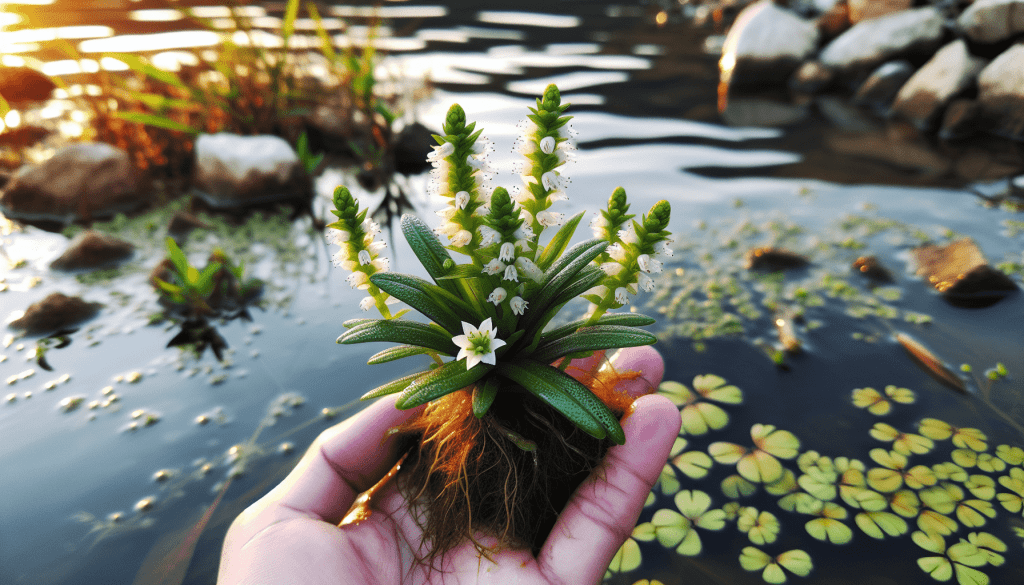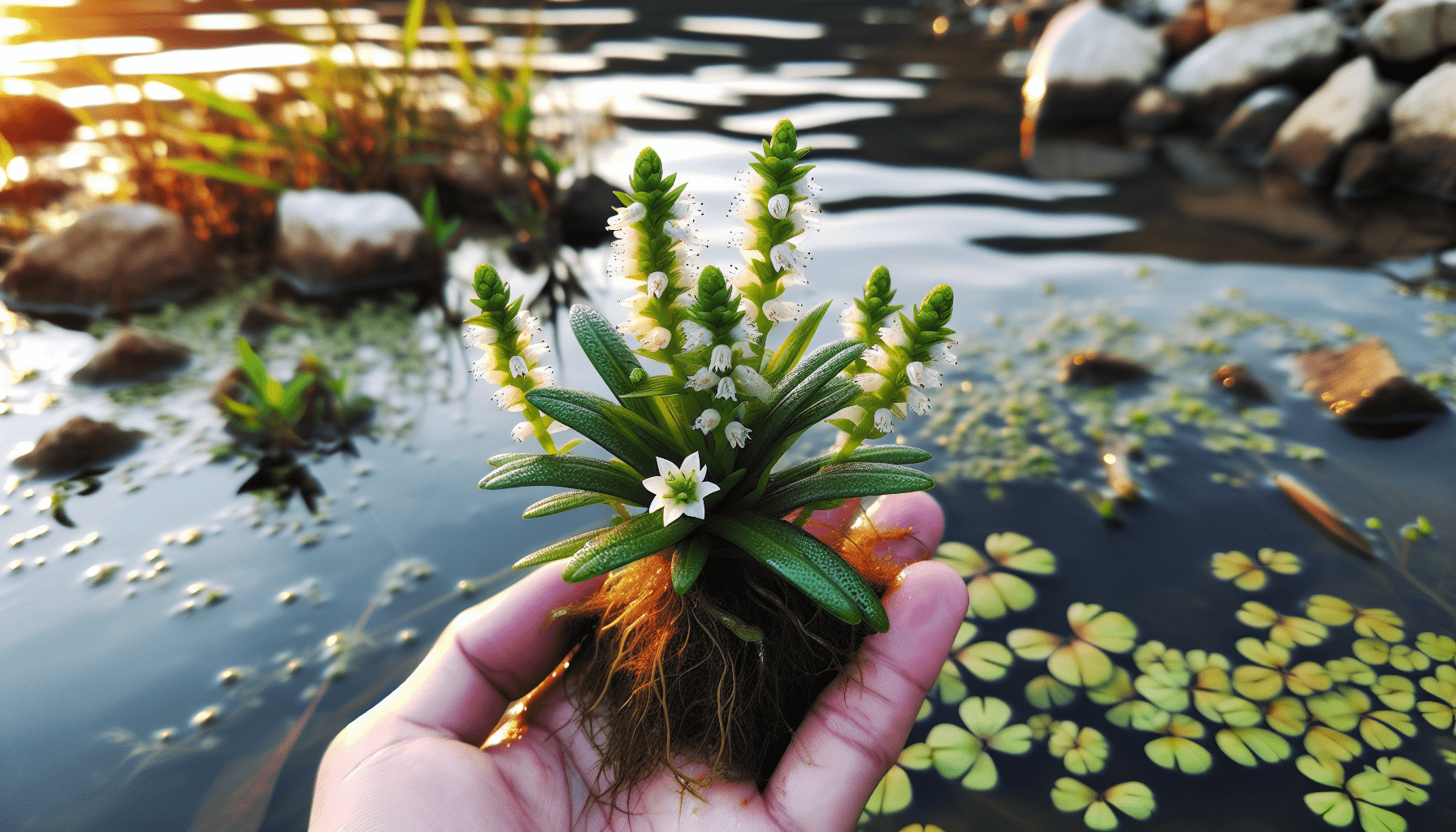Welcome to your go-to resource for understanding and managing alligator weed! This friendly guide will walk you through the basics of identifying this invasive plant and provide practical tips for keeping it under control in your yard or local waterway. Whether you’re a gardening newbie or an experienced green thumb looking to tackle a new challenge, “Beginner’s Guide to Alligator Weed Identification and Control” covers everything you need to know to keep this pesky intruder from taking over. Ready to dive in and make your outdoor spaces thrive? Let’s get started! Have you ever strolled through your garden or backyard, only to see an unfamiliar plant taking over your landscape? If you’ve noticed a dense mat of greenery that’s causing trouble, it might just be Alligator Weed. This invasive species can be a challenge for many gardeners, but don’t worry—you’re not alone! Let’s dive into how you can identify and manage Alligator Weed effectively.
What is Alligator Weed?
To kick things off, let’s understand what Alligator Weed is. Alligator Weed (Alternanthera philoxeroides) is an aquatic and terrestrial invasive species. Originally from South America, it’s found its way across the globe, wreaking havoc on various ecosystems.
Characteristics of Alligator Weed
Before you identify Alligator Weed in your garden, it’s essential to know its key characteristics.
- Stem: Hollow and buoyant, making it easy for this plant to thrive in both watery and dry environments.
- Leaves: Opposite, lance-shaped, and slightly pubescent, typically 2-7 cm long.
- Flowers: Small, white, and clustered, blooming between November and April.
Here’s a table summarizing these characteristics:
| Part of Plant | Description |
|---|---|
| Stem | Hollow and buoyant |
| Leaves | Opposite, lance-shaped, 2-7 cm |
| Flowers | Small, white, clustered |
Understanding these characteristics will help you spot Alligator Weed and differentiate it from other similar plants.
Why You Should Be Concerned About Alligator Weed
Now that you know what Alligator Weed looks like, let’s talk about why it’s a concern. This plant isn’t just a minor nuisance; it’s a significant ecological and economic threat.
Ecological Impact
Alligator Weed competes aggressively with native plants for resources such as sunlight, nutrients, and water. Its dense mats can also lower levels of dissolved oxygen in the water, negatively affecting aquatic life.
Economic Impact
From an economic standpoint, Alligator Weed can disrupt agricultural activities, clog waterways, and require expensive management strategies. These issues can pile up, costing communities millions of dollars annually.

How to Identify Alligator Weed in Your Garden
Identification is the first step to control. Pay attention to these specific features and environment clues:
Environment
- Aquatic Areas: Lakes, rivers, ponds, and wetlands.
- Terrestrial Areas: Moist, disturbed sites like ditches, gardens, and roadsides.
Step-by-Step Identification Process
- Observe the Location: Find where the plant is growing. If it’s near water, you might be dealing with Alligator Weed.
- Examine the Stem: Check if it’s hollow and buoyant.
- Look at the Leaves: See if the leaves are opposite, lance-shaped, and measure 2-7 cm.
- Inspect the Flowers: Look for small, white, and clustered flowers blooming between November and April.
Comparative Identification
Sometimes, you might confuse Alligator Weed with similar-looking plants like Water Primrose or Smartweed. Here’s a handy comparison:
| Feature | Alligator Weed | Water Primrose | Smartweed |
|---|---|---|---|
| Stem | Hollow, buoyant | Hairy, woody | Solid, not buoyant |
| Leaves | Opposite, lance-shaped | Alternate, broader | Alternate, arrow-shaped |
| Flowers | Small, white, clustered | Yellow, solitary | Pink to white, small spiky clusters |
Knowing the differences will save you from treating the wrong plant!
Methods of Controlling Alligator Weed
Identifying Alligator Weed is just the first part. The next step is to control it effectively. Here are some methods you can employ:
Mechanical Control
Mechanical methods involve physical removal or use of machines to manage Alligator Weed. While this can be labor-intensive, it’s highly effective for small infestations.
Hand-Pulling
For smaller patches, you can manually pull out the weed. Make sure to remove the entire root system to prevent regrowth.
Mowing
Mowing can be useful in terrestrial environments. However, make sure you collect and dispose of the clippings properly.
Biological Control
Biological methods focus on using natural enemies to control the weed.
Alligator Weed Flea Beetles
Introducing specialized flea beetles (Agasicles hygrophila) can help control the spread. These insects feed on Alligator Weed, reducing its vigor.
| Pros | Cons |
|---|---|
| Environmentally friendly | Can affect non-target species |
| Long-term solution | Requires monitoring |
Chemical Control
Sometimes, mechanical and biological methods aren’t enough. In such cases, chemical control with herbicides might be required.
Herbicides
Common herbicides used for Alligator Weed control include Glyphosate and 2,4-D. Always read the label and follow the recommended safety measures.
| Herbicide | Application | Effectiveness |
|---|---|---|
| Glyphosate | Spray on foliage | High but needs multiple applications |
| 2,4-D | Spray on foliage and soil | Effective for aquatic areas |
Integrated Management
The best approach often involves combining multiple methods. For example, you can start with hand-pulling, introduce flea beetles, and use herbicides for persistent patches.

Preventing Alligator Weed from Coming Back
Once you’ve taken steps to control Alligator Weed, keeping it from coming back is crucial.
Regular Monitoring
Keep an eye on your garden or water bodies. Regular monitoring helps you catch regrowth early before it becomes unmanageable.
Proper Disposal
When removing Alligator Weed, ensure proper disposal. Do not leave the clippings or roots lying around as they can re-establish.
Plant Native Species
Introducing native plants can compete with Alligator Weed, reducing its chances of coming back.
Frequently Asked Questions (FAQs) about Alligator Weed
1. Is Alligator Weed Harmful to Pets and Livestock?
Alligator Weed isn’t known to be toxic to pets or livestock, but it can reduce the quality of grazing land and water bodies.
2. Can I Use Natural Methods Only to Control Alligator Weed?
You can, but it might not always be effective. A combination of natural and chemical methods often provides the best results.
3. How Quickly Does Alligator Weed Spread?
Alligator Weed spreads rapidly, especially in favorable conditions. It can double its biomass in a few weeks.
4. Is it Possible to Completely Eradicate Alligator Weed?
Complete eradication is challenging and often impossible. The goal should be effective management to minimize its impact.
5. What Should I Do with the Weeds After Removal?
Always dispose of Alligator Weed properly. Do not compost it; instead, bag it and either incinerate or dispose of it in a designated landfill.
6. Are There Any Laws or Regulations Regarding Alligator Weed?
Yes, in some regions, there are specific regulations about controlling and managing Alligator Weed. Check local guidelines for more information.
Conclusion
Alligator Weed might be troublesome, but it’s not unbeatable. With proper identification and a combination of control methods, you can manage this invasive species effectively. Remember, persistence is key—regular monitoring and timely action will go a long way.
By understanding the characteristics and impacts of Alligator Weed, you’re already one step ahead in the battle. Now, arm yourself with the right tools and strategies, and reclaim your garden or water body from this pesky invader!
